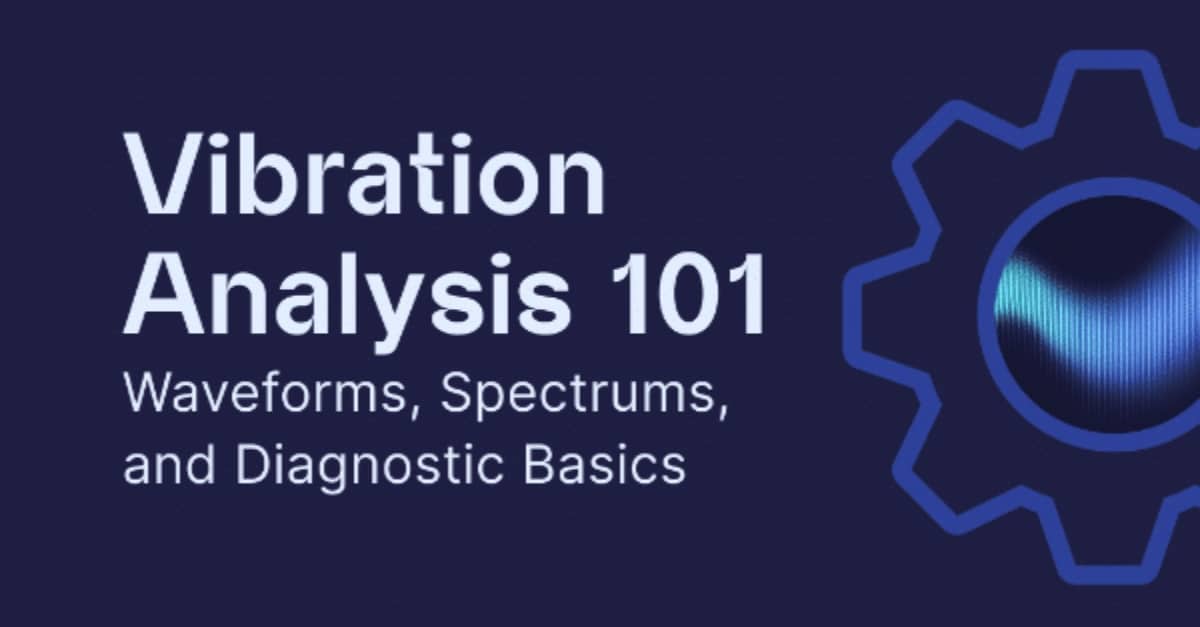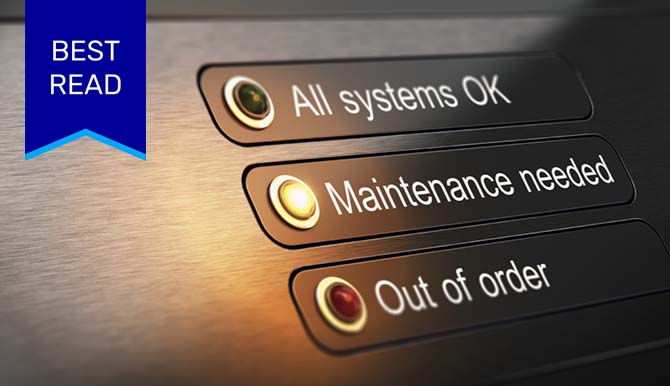
Augury’s Vibration Analysis 101 series opened with the edition ‘Waveforms, Spectrums, and Diagnostic Basics,’ where industry experts took a deep technical dive into everything you need to know to apply vibration analysis to your CBM program.
Whether you are an old VA pro or looking to learn more, Augury’s new series, Vibration Analysis 101, has something for everyone. The opening webinar, ‘Waveforms, Spectrums, and Diagnostic Basics,’ was hosted by myself and Solutions Architect – and seasoned vibration analyst – Andrew Pry.
Webinar covers the basics with rundowns on:
- The pros and cons of route-based and online monitoring.
- How time waveforms turn into data that can diagnose common machine faults.
- The knowledge you need to start your vibration journey.
Diagnosing Common Machine Faults
Key takeaways:
- Vibration is a powerful tool to understand the health of your equipment.
- If you are detail-oriented, enjoy math, listen well to others, and are willing to put in the work, you could be an excellent vibration analyst!
- Learn the fundamentals! This includes recognizing common fault types such as Bearing wear/lubrication issues, coupling wear/misalignment, gear wear, sheave issues and belt wear, and rotating/structural looseness.
- Learn the tricks of the trade! For example:
– Use the spectrum to diagnose issues. It would be best if you zoomed in to make sure you have the correct frequency since fault frequencies can be very close to each other
– Know the feature trend or spectrum you are looking at and what it means
– The trend is your friend. If a feature is increasing over time, it’s worth investigating. You can begin by overlaying an older spectrum with a newer spectrum – which might show what frequency is increasing. The next step would be to find where that frequency is coming from in the machine and inspect it.
– Don’t assume you are right because you are certified. Please keep an open mind to other people’s knowledge and learn from it. - There are multiple avenues to start implementing a vibration analysis program.
- Data isn’t enough. Knowledge is critical to understanding what actions to take.
- Know where to start. Follow a training – through videos, classes, and mentors – and get those certifications.
Measuring Machine Vibration Data
Furthering Your Reliability Journey
As we hear from Andrew with his experience and what he’s learned, it isn’t enough to understand that data. You need to know the machine and how it operates. You need to know what actions to take when you’re stumped. Only then can this tool come together into something you can roll out and really advance your reliability journey.
Watch the webinar Vibration Analysis 101: Waveforms, Spectrums, and Diagnostic Basics on-demand.






